| Columns Retired Columns & Blogs |
You said and purchasing, ripping, and selling CDs . I hope you didn't mean that you condone the practice of buying a CD, ripping it then selling it on whilst keeping the rip?
When I unpacked the Spec amplifier for testing, I was at first confused: Although Ken Micallef was supposed to have reviewed Spec's RPA-W7EX, a label on the amplifier's rear panel identified it as an "RPA-W5ST." It turned out that this very early export sample of the 'W7EX had been assembled before the correct labels were ready. Jonathan Halpern, of US distributor Tone Imports, assured me that the review sample was representative of current production.
Reassured, I performed a full set of measurements on the RPA-W7EX using my Audio Precision SYS2722 system (see the January 2008 "As We See It"). As the 'W7EX has a class-D output stage, there was around 310mV of RF noise present at its output (footnote 1). For almost all the measurements, therefore, I used an Audio Precision AUX-0025 passive low-pass filter ahead of the analyzer, which eliminates noise above 200kHz that would otherwise overload the analyzer's input stage.
As KM found, the 'W7EX has very high gain. Feeding a 1kHz tone at 100mV into the single-ended input (Line 1) or the balanced input (Line 2) resulted in a level at the speaker terminals of 7.8V into 8 ohms: a voltage gain of 37.85dB, which is 10dB higher than the norm. The switched 6dB pad on the rear panel reduced the gain by 7dB for both inputs. (The balanced gain was measured with pin 1 on the generator's XLR jack floating. If I connected pin 1 to ground, the usual condition for a balanced source, the gain decreased by 4.5dB!) Both inputs preserved absolute polarity (ie, were non-inverting). The unbalanced input impedance was on the low side, at approximately 7500 ohms at audio frequencies. The balanced input impedance with pin 1 floating was 7650 ohms. Capacitor-coupled source components that have an output impedance that rises at low frequencies will sound a little lean with the RPA-W7EX.
The output impedance at low and middle frequencies was usefully low, at <0.1 ohm (including 10' of speaker cable), though it rose to greater than 1 ohm at 20kHz. As a result, the modulation of the amplifier's frequency response with our standard simulated test load was ±0.3dB below 10kHz (fig.1, gray trace), but with the top octave boosted by up to 1.5dB. This graph was taken without the AP low-pass filter; a 3dB peak centered on 38kHz can be seen with the amplifier driving an 8 ohm load (blue and red traces), but was absent into 4 ohms (cyan, magenta) or 2 ohms (green). The rise in output impedance above 10kHz drops by 4dB the level at 20kHz into 2 ohms. The frequency response was the same for unbalanced and balanced inputs, and with the 6dB pad in circuit. The response peak into 8 ohms resulted in a degree of overshoot on the leading edges with a 1kHz squarewave (fig.2), which, with a 10kHz squarewave (fig.3), can be seen to be associated a single damped cycle of ringing.
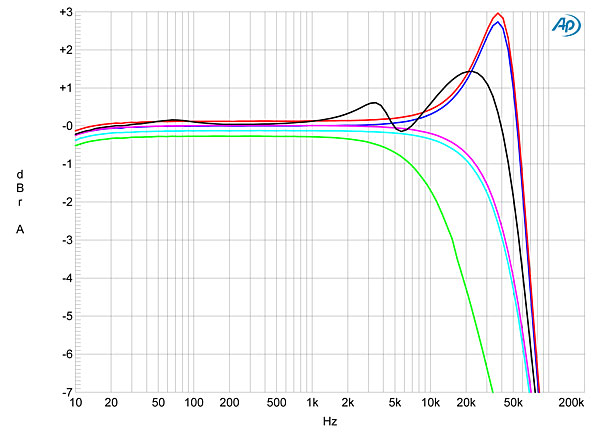
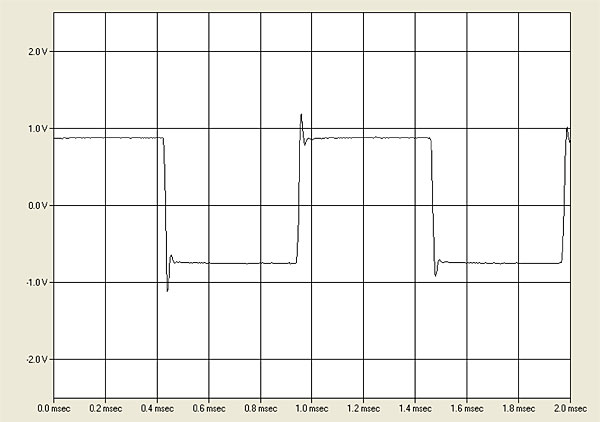
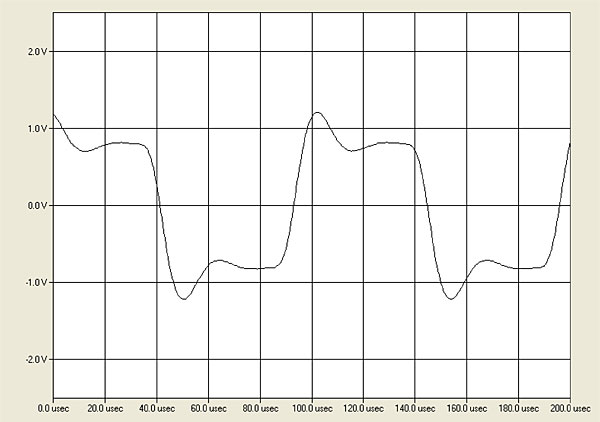
When I reinserted the AP low-pass filter, the Spec's unbalanced channel separation at 1kHz and below was good, at 75dB R–L and 92dB R–L, but decreased to 50dB at the top of the audioband. Balanced separation was not quite as good. There was a problem when I examined the 'W7EX's signal/noise ratio: The measured figure was best when I floated the unbalanced input's ground, a situation that will not be encountered when the Spec is connected to the unbalanced outputs of a real-world CD player, DAC, or preamplifier. The A-weighted S/N was 78dB, ref. 2.83V into 8 ohms, worsening to 65dB with an unweighted wideband measurement, which is marginal, in my opinion. Fig.4 shows a spectral analysis of the RPA-W7EX's low-frequency noise floor as it drove a 1kHz tone at 1W into 8 ohms. The spectrum, taken with the generator's ground floating, consists of random noise at a level equivalent to around 12 bits of resolution. Connecting the shell of the RCA jack to ground introduced spectral spikes at 60, 180, and 300Hz (fig.5). Though it's fair to note that the highest-level hum component lies at –77dB (0.014%), this behavior suggests that there is something not quite optimal about the 'W7EX's internal grounding.
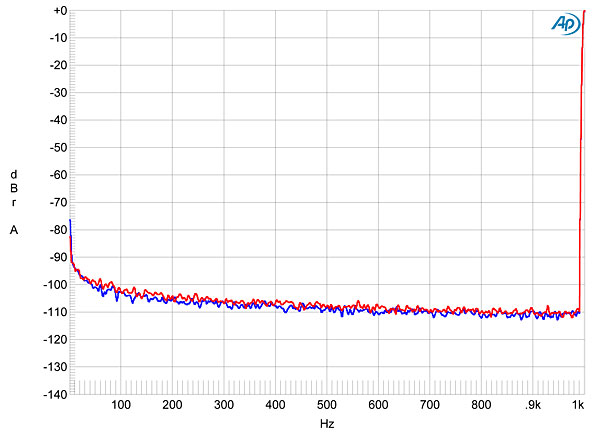
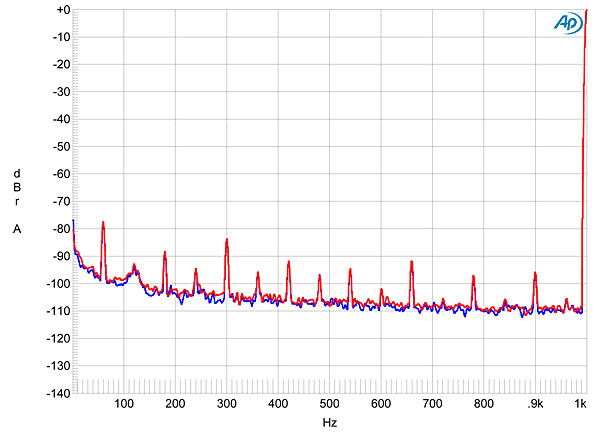
I examined the way the Spec's percentage of THD+noise changes with output power into 8 ohms via the AP0025 filter (fig.6): The downward slope of the trace at low powers reveals that any distortion is buried under the noise floor below 15W or so. With clipping defined as the power when the THD+N equals 1%, the Spec clips with both channels driven at 43W into 8 ohms (16.33dBW). Into 4 ohms (fig.7), the amplifier clips at 80W (16.02dBW), which is lower than the specified 100Wpc into 4 ohms (17dBW). (The amplifier does meet its specified output power at 3% THD+N.) To produce fig.8, I plotted how the THD+N percentage varied with frequency at a level, 9.8V (equivalent to 12W into 8 ohms, 24W into 4 ohms, or 48W into 2 ohms), where I could be sure I was examining actual distortion rather than noise. The results are shown in fig.8: Into 8 ohms (blue and red traces) and 4 ohms (cyan, magenta), the distortion is very low below 1kHz, but rises above that frequency. Into 2 ohms (gray), the trace stops at 300Hz—at this point, the RPA-W7EX went into protection mode after having operated at this level for the 30 seconds or so the test had taken up to then. I turned off the generator; the amplifier's output turned back on, but this result suggests that the 'W7EX should not be used with loudspeakers whose impedance drops much below 4 ohms.
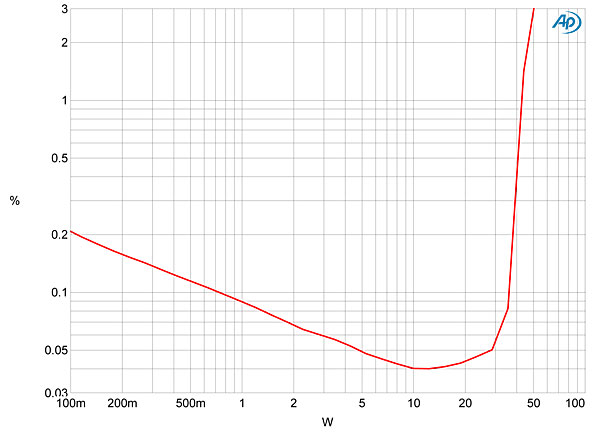
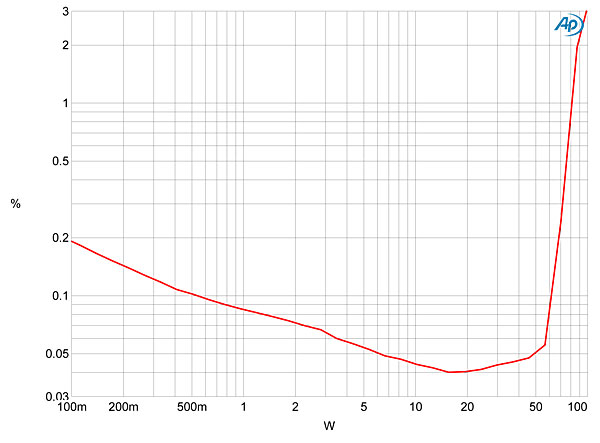
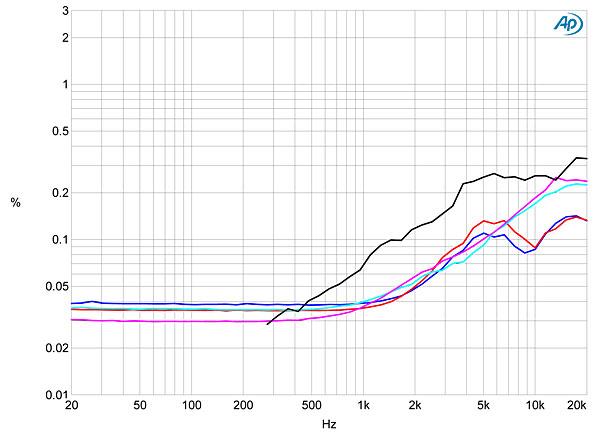
Examining the residual THD+N waveform with a digital oscilloscope didn't prove very illuminating, as any distortion was buried beneath the HF noise that was present even at a fairly high power (fig.9). But this graph does hint at what could be clearly seen on a 20MHz analog 'scope: there were HF noise bursts that coincided with the waveform peaks. Spectral analysis at this power level (fig.10) reveals that the Spec's harmonic-distortion signature comprises low-order spuriae, all at or below –90dB (0.003%). When I then fed the RPA-W7EX the very demanding combination of 19 and 20kHz tones at an output level just below visual clipping on the 'scope into 8 ohms, the actual intermodulation distortion was relatively low (fig.11), the 1kHz difference component lying at –94dB (0.0015%). The higher-order products are 20dB higher in level, however, and the noise floor looks ragged, something that gets worse into lower impedances.
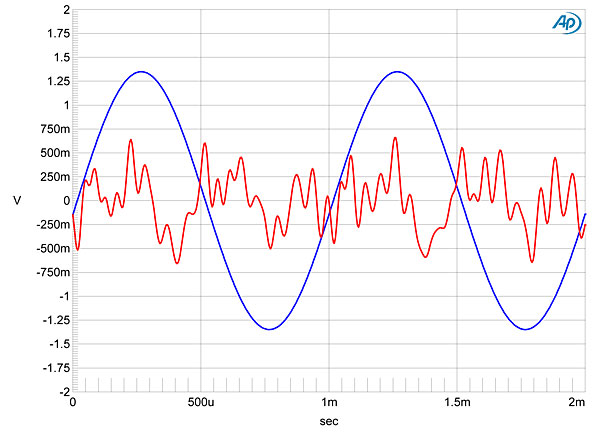
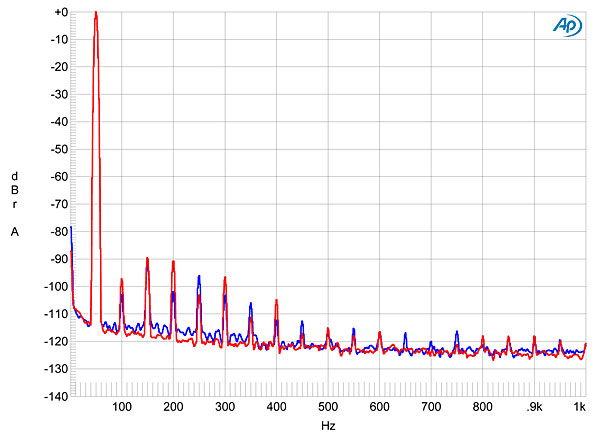
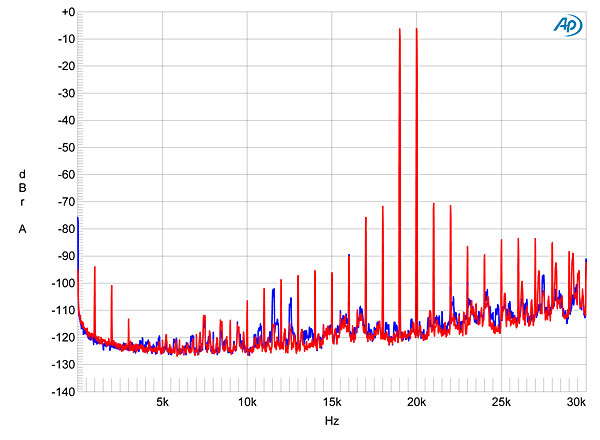
KM very much liked the sound of the Spec RPA-W7EX. I, however, was disappointed by its measured performance—modern class-D amplifiers, especially those using one of the Hypex modules, measure very much better than this. And with its low input impedance, its dislike of load impedances below 4 ohms, and its high levels of radiated noise, this not an amplifier that can be universally recommended, I feel.—John Atkinson

I think this discussion about ripping a CD and what you can or cannot do with is so over.

The test data for this amp look like something out of the deep dark hacker past! I got a little Topping for use with the computer (and some mid-sized old Altec bookshelf speakers) that sounds wonderful including clear, tight bass. For less than $100. Main complaint is lack of power - OK for the computer, but I wouldn't want to try driving anything much bigger or in a bigger room.

the measurements are rubbish for this amp. a $300 Yamaha amp will trounce this cat.

looking at the board design this amp was clearly designed by linear amp designer
"If you see toroids in the output filter, shudder. If it's mounted upright, shudder once more." Bruno Putzeys
Its like they read this article on what not to do and then do That.
http://www.audioholics.com/audio-amplifier/switching-amplifier-class-d-basics/switching-amplifier-class-d-basics-page-2
Everything from transistor positions, ground board design, connector positions, filter components it is Bad i dont think this amp will pass CE FCC.

"If you see toroids in the output filter, shudder. If it's mounted upright, shudder once more."—Bruno Putzeys
When Bruno speaks, wise men listen!
John Atkinson
Editor, Stereophile